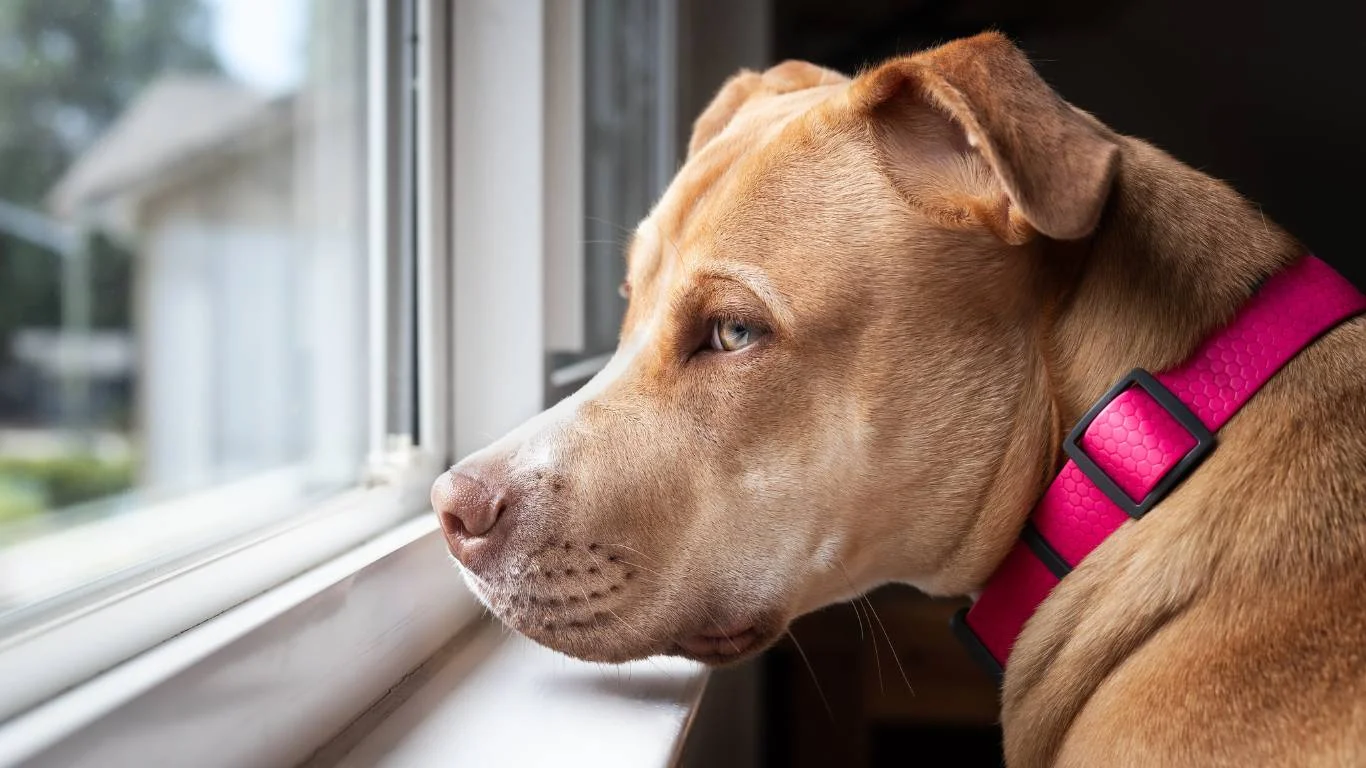Why Does My Dog Shake After Eating? Causes & Simple Solutions
As a Veterinary Assistant with a focus on nutrition, I’ve seen a lot of questions come through the door—especially about dogs and their quirky behaviors. One of the most common questions I get from concerned pet parents is: Why does my dog shake after eating? It might seem like a small thing, but it can be worrying, especially when your dog is shaking uncontrollably or seems to be in discomfort after meals. I totally get it. As pet owners, we want to understand what’s going on and how to fix it. So, let’s break down some of the reasons your dog might be shaking after eating, and when you should really start to worry.
What Causes Shaking After Eating?

First off, let’s talk about some of the common causes. Most of the time, it’s nothing too serious, but there are certain situations that could require a bit more attention. Dogs can shake for a lot of reasons—nervousness, cold, excitement, or even after eating. It’s important to understand the context, so let’s break it down.
1. Excitement or Overstimulation
One of the most innocent reasons your dog might shake after eating is simply because they’re excited. Dogs are social creatures, and meal times are often tied to a sense of routine and anticipation. If your dog loves food (and let’s be honest, most of them do), they may get a little overstimulated when it’s time to eat. This can result in a bit of post-meal shaking, especially if the food is a special treat or if they’ve been waiting eagerly for their bowl to appear.
My dog, Charlie, does this every time I bring out his food. He’s not even hungry anymore; he’s just so pumped up! It’s like he can’t help but do a little happy dance right after his bowl is placed down. It’s actually kind of adorable!
2. Digestive Issues
Another reason your dog might shake after eating is that they’re experiencing some discomfort in their stomach. This could be anything from bloating, gas, or even a mild upset stomach. If your dog is shaking along with signs like drooling, pacing, or licking their lips, it might indicate that they’re not feeling quite right after their meal.
It’s important to pay attention to the type of food you’re giving your dog. Certain ingredients can upset sensitive stomachs, especially if your dog is prone to food intolerances. Sometimes, dogs might even shake because their bodies are working overtime to digest the food they’ve just eaten. It’s a good idea to track what foods cause discomfort and adjust accordingly to see if that’s the issue.
3. Low Blood Sugar or Hypoglycemia
Hypoglycemia, or low blood sugar, is a condition that can cause shaking, weakness, and lethargy. While it’s more common in smaller breeds, puppies, or dogs with underlying health conditions, it can affect any dog. If your dog is shaking after eating, it could be a sign that their blood sugar is dropping too quickly, especially if they’ve had a large meal or if they’ve been fasting for too long.
In these cases, the shaking often happens shortly after eating, and it may be accompanied by other symptoms like lethargy or weakness. If you suspect your dog has hypoglycemia, it’s important to talk to your vet to rule out any serious health conditions and adjust their diet accordingly.
When Should You Be Concerned?

Shaking after eating isn’t always a cause for alarm, but it’s important to know when it’s time to seek veterinary attention. Here are a few red flags that might indicate there’s something more serious going on:
- Persistent or severe shaking: If your dog is shaking for an extended period or it seems to be getting worse, this could be a sign of something more serious.
- Vomiting, diarrhea, or loss of appetite: If the shaking is accompanied by other signs of gastrointestinal distress, this might indicate a digestive issue that needs medical attention.
- Behavioral changes: If your dog is acting lethargic, anxious, or uncharacteristically moody after eating, it could be an indication of an underlying issue like food intolerance or a more serious health problem.
- Shaking paired with weakness: If your dog’s shaking is accompanied by weakness or difficulty standing, this could point to a neurological issue or metabolic imbalance.
As a general rule, if you’re noticing any of these symptoms, it’s always better to err on the side of caution and consult with your veterinarian. They can help determine the cause of the shaking and guide you on the best course of action.
Could It Be Related to Food Sensitivities?

Many dogs have food sensitivities that can lead to digestive issues, skin reactions, and yes—shaking after eating. This could happen if your dog is allergic to a specific ingredient in their food. Common culprits include beef, chicken, dairy, or grains. If you’ve recently switched your dog’s food and noticed an increase in shaking or other symptoms, this could be the cause.
One way to pinpoint food sensitivities is by working with your vet to perform an elimination diet. This process involves gradually removing certain ingredients from your dog’s diet and observing how they respond. It can take some time, but it’s a great way to narrow down the specific foods that may be causing discomfort.
As a quick tip, always read food labels carefully, and avoid feeding your dog human food, especially those that are toxic to them, like chocolate, grapes, and onions. Sometimes the shaking could be a reaction to something unexpected in their diet.
Could It Be a Health Issue Related to the Nervous System?

In some cases, the shaking could be linked to something a bit more serious, like a neurological issue. While this is less common than digestive or excitement-related shaking, it’s important to be aware of potential health problems. Some dogs can develop conditions that affect the nervous system, leading to involuntary shaking or tremors.
One example is idiopathic tremors, which is a condition where a dog experiences uncontrollable shaking or trembling, often without a clear cause. It can affect dogs of all breeds and sizes, and while the exact cause isn’t always clear, it’s believed to be related to nervous system dysfunction. Dogs with this condition usually shake even when they’re at rest and may appear otherwise healthy.
If you notice that your dog’s shaking continues for long periods, or if it’s accompanied by other signs like difficulty walking, balance issues, or lethargy, it’s worth bringing it up with your vet. While these issues are rare, it’s always best to be on the safe side when it comes to your pet’s health.
4. Hypothermia or Cold Sensitivity
Just like us, dogs can feel the cold, and sometimes after eating, they might shake simply because they’re feeling chilly. After a meal, their body might divert energy towards digestion, making them more sensitive to temperature changes. If your dog is older, smaller, or has thin fur, they might be more susceptible to feeling cold, which could trigger the shaking.
In my experience, I’ve seen a few dogs who tend to shake more when they’re in colder environments or after eating cold food. If your dog is shaking only when it’s chilly, and the shaking stops once they warm up, it could simply be a sign that they need a cozy blanket or a bit more warmth after mealtime. I have a little dog named Bella who has this exact issue. Whenever it’s a bit too cold in the house, she’ll shake after eating, especially if it’s a chilly morning. A warm sweater or a comfy spot next to the heater tends to do the trick!
So, before you panic, try to notice if the shaking happens more in cooler temperatures. It’s a simple issue to solve with a little extra warmth, but still worth keeping in mind if your dog seems to have a sensitivity to the cold.
Is the Food You’re Feeding the Problem?

If you’ve ruled out excitement, digestive issues, or temperature sensitivities, it’s time to look more closely at what your dog is eating. While most dogs will eat anything, some can develop food sensitivities over time. The type of food, the way it’s prepared, or even the ingredients used can all play a role in your dog’s health. If you’ve noticed shaking after meals and can’t seem to pinpoint another cause, it could be worth switching up your dog’s diet to see if that helps.
High-fat foods or food that’s too rich can sometimes upset your dog’s system, causing gastrointestinal distress, which might lead to shaking. If you’ve been feeding your dog a new brand of food or a richer diet, and the shaking started shortly after, that could be a sign that their body is having trouble digesting it.
I’ve seen cases where dogs were on foods that were too greasy or heavy for their systems, and once the owners switched to a more balanced, lower-fat food, the shaking stopped. Of course, this doesn’t mean every dog will react this way, but it’s a good idea to monitor your dog’s reaction to food and consider making adjustments as needed.
Food Allergies and Sensitivities
Food allergies or sensitivities are another common culprit when it comes to shaking. Dogs, just like humans, can develop allergies to certain ingredients, and some may have sensitivities to things like chicken, beef, grains, or even certain preservatives used in commercial dog food. If your dog is experiencing shaking along with other signs of discomfort, such as excessive itching, ear infections, or digestive issues like diarrhea, it could be a food allergy in play.
If you suspect this could be the case, consider starting an elimination diet, which involves removing common allergens from your dog’s diet and slowly reintroducing them to see which one causes a reaction. This process can help pinpoint exactly what’s causing the problem, and you can work with your vet to find a hypoallergenic or limited-ingredient food that works best for your dog’s needs.
Other Health Issues to Consider

While the most common reasons for shaking after eating are related to excitement, temperature, or mild digestive issues, there are some underlying health problems that could also be a factor. Some conditions, like Cushing’s disease, kidney disease, or even pancreatitis, can cause shaking as a symptom. These diseases can affect a dog’s overall health, causing them to shake, even after eating a meal.
If your dog is showing other signs, such as increased thirst, frequent urination, weight loss, or a lack of appetite, it’s worth mentioning to your vet. Conditions like pancreatitis can be painful and dangerous, and the shaking might be a sign that something is wrong internally.
Additionally, if your dog is older, it’s important to consider age-related issues. As dogs age, their bodies can experience changes that affect their metabolism and digestion, sometimes leading to increased sensitivity after meals. A check-up with your vet can help identify any age-related concerns and give you peace of mind.
Ultimately, while occasional shaking after eating is often harmless, it’s important to stay vigilant about any changes in your dog’s behavior, especially if the shaking is new or worsening. With the right attention and care, you can help your furry friend feel better and enjoy their meals without the worry of shaking afterwards!
How to Help Your Dog if They’re Shaking After Eating

Now that we’ve covered the potential causes for shaking after eating, let’s talk about how you can help your dog feel more comfortable and potentially reduce or prevent the shaking. As a pet parent, it’s natural to want to fix the issue as soon as possible, but the first step is always understanding what might be behind it. Here are a few things you can do to help your dog out:
1. Adjust Their Diet
If you suspect that your dog’s shaking after eating is related to their food, it’s time to evaluate their diet. As I mentioned earlier, some dogs may have sensitivities to certain ingredients. You might want to try a hypoallergenic or limited-ingredient diet, which can help rule out common allergens like chicken, beef, or grains.
Personally, I’ve had a lot of success switching dogs to foods that focus on simpler, high-quality ingredients. For instance, I had a foster dog once who was having consistent digestive issues after meals, including shaking. After switching him to a food with fewer ingredients and no grains, his symptoms improved dramatically. It really made a difference, and he stopped shaking within just a few days of the switch.
If you’re unsure which food is best for your dog, don’t hesitate to ask your vet for recommendations. They can help you choose a high-quality food that meets your dog’s specific needs.
2. Keep Them Warm
If you’ve noticed that your dog shakes more when it’s colder or after eating a cold meal, you can help them stay comfortable by keeping them warm. Consider using a cozy blanket, keeping them in a warmer room, or even using a dog sweater if your pet is especially sensitive to cold.
In my experience, I’ve found that warming up your dog’s meal can also help. For example, if you’re serving a wet food that’s been refrigerated, try letting it sit out for a little while or warming it up in the microwave for a few seconds (just make sure it’s not too hot!). This can make the meal more inviting and easier on their system, especially if they’re particularly cold-sensitive.
3. Manage Their Stress and Excitement
As we’ve discussed earlier, excitement and overstimulation can cause shaking in dogs, particularly around mealtimes. Some dogs get overly excited when it’s time to eat, leading to a bit of post-meal shaking. To manage this, try to create a calm environment around mealtimes. This might involve limiting distractions and ensuring that your dog has a quiet, stress-free space to eat.
One thing I’ve done in the past to help calm a particularly excited dog is using slow feeders or puzzle feeders. Not only do these help with digestion (by slowing down how quickly they eat), but they also keep your dog mentally engaged and distracted, which reduces excitement and anxiety. I’ve seen a huge difference in dogs who’ve used puzzle feeders—they calm down and stop shaking within 10-15 minutes of finishing their meals.
4. Monitor for More Serious Symptoms
If the shaking persists, or if it’s accompanied by other concerning symptoms, you should definitely consult your vet. As we’ve discussed, there are some health conditions that could be contributing to the shaking, like hypoglycemia, digestive issues, or even neurological problems. The best thing you can do is keep an eye out for any additional signs, such as:
- Vomiting or diarrhea
- Loss of appetite or drastic changes in eating habits
- Behavioral changes, such as lethargy or increased anxiety
- Shaking or weakness that doesn’t go away after a short period of time
If you notice any of these symptoms, it’s time to get in touch with your veterinarian. They can perform a thorough exam and run tests to rule out any serious conditions. Remember, it’s always better to be safe than sorry when it comes to your dog’s health.
Consulting Your Vet for Professional Guidance
While there’s a lot you can do at home to help your dog if they’re shaking after eating, nothing beats the advice and care of a veterinary professional. If you’ve tried adjusting their diet, managing stress, and keeping them warm, and the shaking continues or worsens, your vet will be able to provide further insights into what might be going on.
As a Veterinary Assistant, I’ve seen firsthand how important it is to keep your vet in the loop when there’s something unusual going on with your pet. A simple visit can make all the difference, especially if there’s an underlying health issue that needs attention. Your vet can also recommend additional treatments or diagnostic tests to get to the bottom of your dog’s shaking.
5. When to Seek Emergency Care
In rare cases, shaking after eating could be a sign of something more severe that requires immediate attention. If your dog is showing signs of distress, such as:
- Severe vomiting or diarrhea that doesn’t stop
- Rapid breathing or difficulty breathing
- Severe lethargy or unresponsiveness
- Uncontrolled shaking or tremors that don’t stop after a while
…you should seek emergency veterinary care right away. These could be signs of a serious condition like pancreatitis, a metabolic disorder, or even poisoning. It’s important not to wait if you feel that your dog’s condition is worsening or if they seem to be in significant pain or distress.
Additional Resources
If you’re looking for more information about dog health, diet, or behavioral issues, here are some great resources you can check out:
These sites provide a wealth of information on everything from nutrition and health concerns to behavioral issues and preventive care.
Disclaimer
While this article is based on my experience as a Veterinary Assistant and general knowledge of dog care, it’s important to remember that every dog is unique. The information provided here is intended for general informational purposes and is not a substitute for professional veterinary advice. Always consult with your veterinarian for any health concerns regarding your dog.






